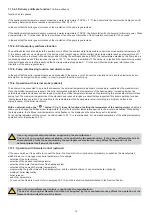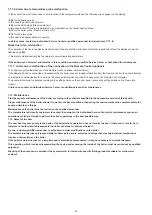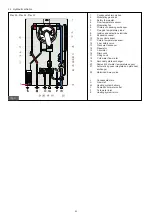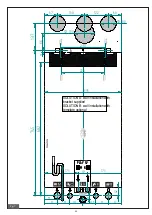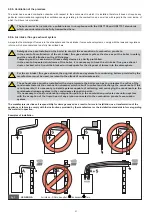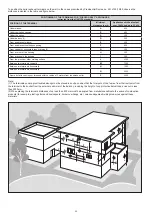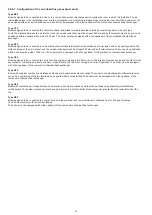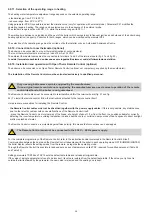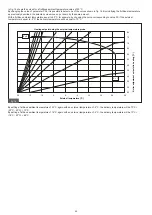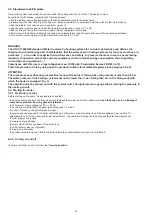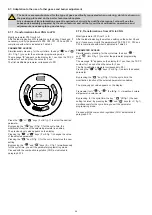
31
fig. 9
LEGEND: A
Air intake - S Smoke outlet - Condensate Rain
3.2.5.
Ventilation of the premises
The boiler has a sealed combustion chamber with respect to the environment in which it is installed, therefore it does not require any
particular recommendation regarding the ventilation openings relating to the combustion air, as well as with regard to the room inside. of
which it will have to be installed.
The boiler must be installed in a suitable room in compliance with the UNI 7129 and UNI 7131 standards
which are understood to be fully transcribed here.
3.2.6.
Air intake / flue gas exhaust system
As regards the discharge of fumes into the atmosphere and the air intake / fumes exhaust systems, comply with the laws and regulations
in force, which are understood to be fully transcribed here.
Safety devices are installed on the boiler to control the evacuation of combustion products.
In the event of a malfunction of the air intake / flue gas exhaust system, the devices put the boiler in safety
and the code E14 flashes on the LCD display.
Tampering and / or exclusion of these safety devices is strictly prohibited.
In the event of repeated shutdowns of the boiler, it is necessary to have the air intake / flue gas exhaust
ducts checked, which could be blocked or inadequate for the disposal of fumes into the atmosphere.
For the air intake / flue gas exhaust, the original ducts and systems for condensing boilers provided by the
manufacturer must be used, resistant to the attack of condensate acids.
The exhaust pipes must be installed with a slope towards the boiler such as to guarantee the reflux of the
condensate towards the combustion chamber which is built to collect and discharge the condensate. If this
is not possible, it is necessary to install systems capable of collecting and conveying the condensate to the
condensate drainage system in the condensate stagnation points.
It is necessary to avoid condensation stagnation points in the combustion products evacuation system,
with the exception of the liquid head of any siphon connected to the combustion products evacuation
system.
The manufacturer declines all responsibility for damage caused as a result of errors in installation, use, transformation of the
appliance or failure to comply with the instructions provided by the manufacturer or the installation standards in force regarding
the material in question.
Examples of installation


